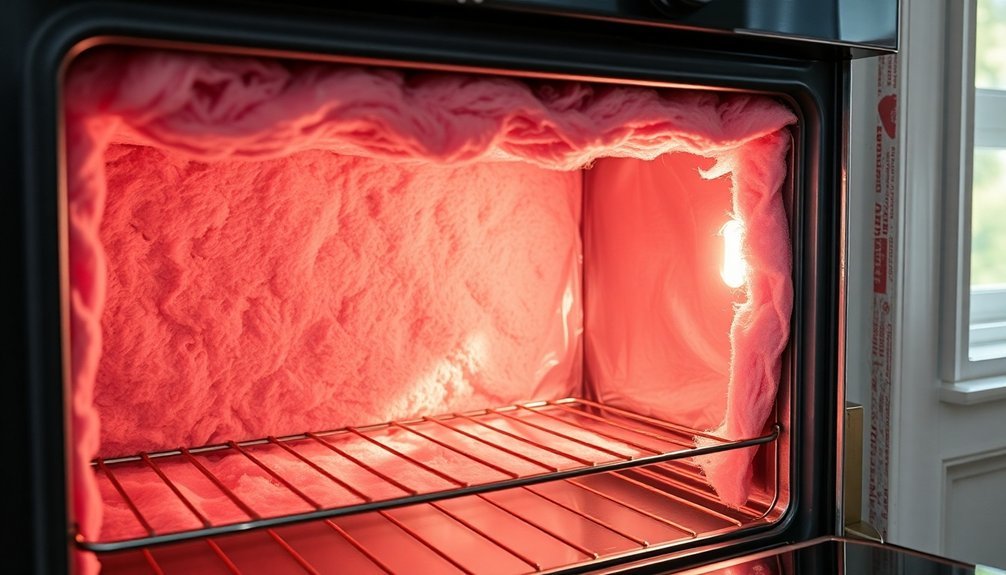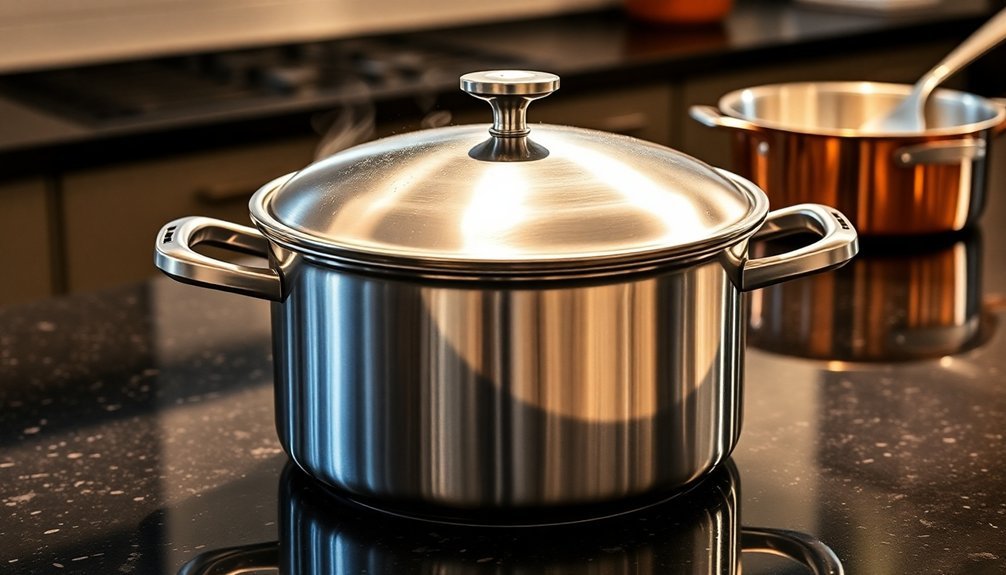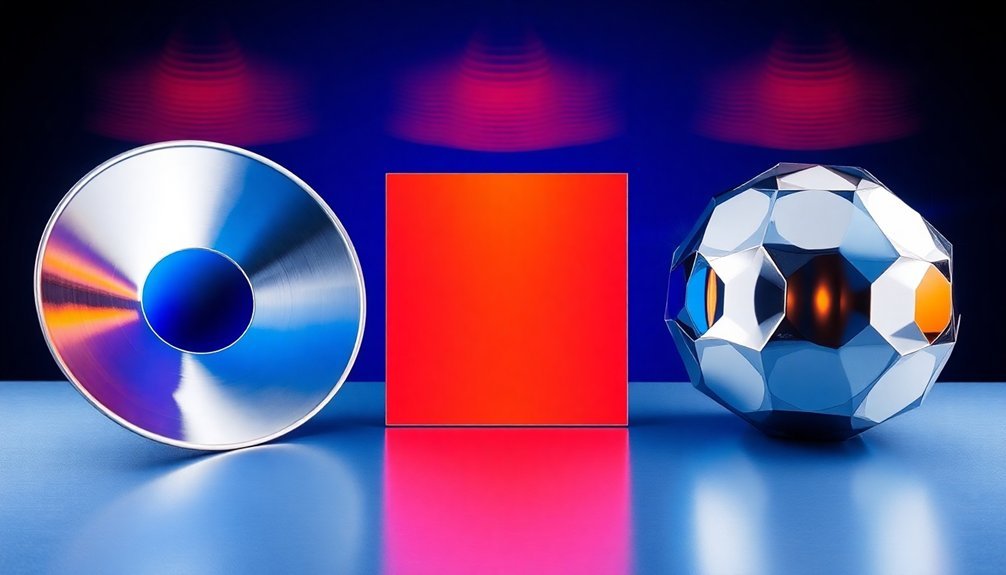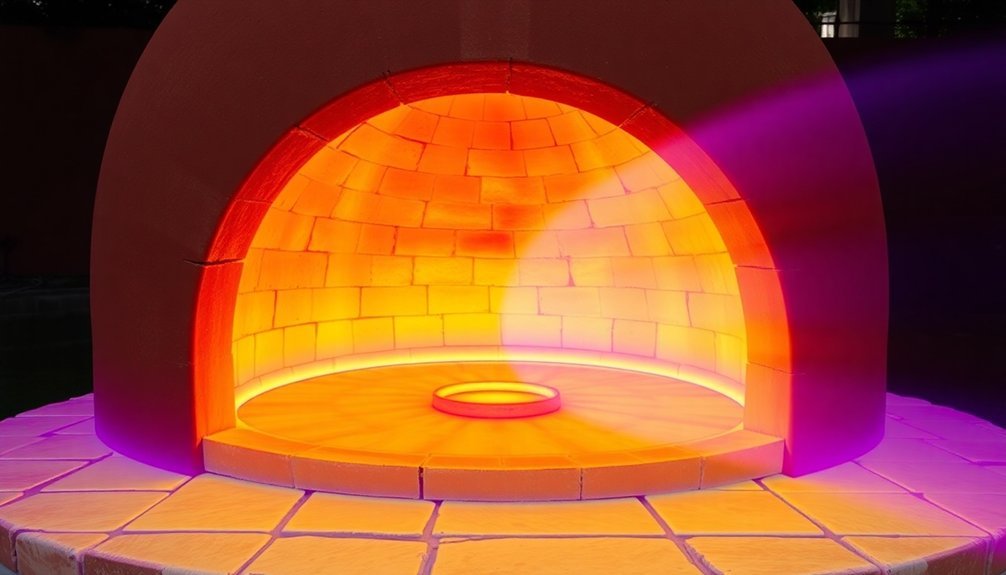To maximize your oven's heat retention, start by upgrading your insulation with ceramic fiber blankets or rock wool materials rated for high temperatures up to 1260°C. Next, maintain your oven door's effectiveness by regularly checking the spring mechanism, alignment, and seal integrity – a properly sealed door prevents heat from escaping during cooking. Finally, choose the right cookware, like heavy-duty cast iron or tri-ply pots and pans with thick walls and flat bottoms, to maintain consistent temperatures throughout your cooking process. These fundamental steps will open up a world of enhanced cooking efficiency and energy savings.
Proper Insulation Methods

When choosing insulation for your oven, you'll need to take into account the temperature requirements and cost-effectiveness of different materials.
For high-temperature applications up to 1260°C, ceramic fiber blankets offer the best performance in both domestic and industrial ovens. You can get them in 25mm or 50mm thickness. Available in rolls of 7.6m, these blankets are perfect for larger installations.
If you're working with concrete ovens, rock wool is your best choice, as it's dense and can withstand temperatures up to 1000°C.
For lower temperature needs, fiberglass provides a cost-effective solution, handling up to 538°C.
When installing, wrap your oven dome with carefully cut ceramic fiber blankets and secure them with wire mesh.
Don't forget to layer your insulation – adding a vermiculite-cement mixture over the ceramic fiber blanket will enhance your oven's heat retention capabilities.
Smart Door Management
Beyond proper insulation, your oven's door plays a major role in heat retention. Maintaining your door's spring mechanism and alignment guarantees a proper seal, preventing heat from escaping during cooking.
You'll want to regularly check the door's spring tension and mounting points, replacing any damaged components promptly. Many hardware stores like Lowes carry Hillman replacement springs for convenient repairs.
For enhanced efficiency, consider upgrading to a smart door system that monitors seal integrity and automatically reports issues. You can integrate these systems with your home automation setup to track temperature fluctuations and door performance.
Don't forget to clean the door and surrounding areas frequently to prevent residue buildup that could compromise the seal.
If you notice any alignment issues, adjust the mounting screws carefully – but avoid overtightening, as this can damage the door panels and affect their sealing capability.
Efficient Cookware Selection

Three key factors determine cookware's heat retention in your oven: material composition, construction quality, and design features.
For best results, choose heavy-duty cast iron pieces, which excel at locking in heat and maintaining consistent temperatures during long cooking sessions. They're perfect for both stovetop searing and oven roasting.
If you prefer lighter options, consider tri-ply cookware with its aluminum core sandwiched between stainless steel layers. You'll get excellent heat distribution and retention without the weight of cast iron. Using multi-layer construction helps achieve optimal heat transfer throughout your cookware.
Carbon steel offers another viable alternative, providing superior heat circulation while remaining relatively lightweight. Just remember it needs regular seasoning.
Look for cookware with flat bottoms and thick walls to maximize contact with your oven's heat. These features facilitate even cooking and minimize heat loss during temperature fluctuations.
Frequently Asked Questions
How Long Should I Wait Before Cleaning My Oven After Cooking?
You'll want to wait until your oven's completely cool before cleaning, typically 2-3 hours after cooking. Don't rush, as hot surfaces can create dangerous steam or cause chemical reactions with cleaning products.
Can Placing Aluminum Foil on Racks Improve Heat Distribution?
No, you shouldn't place foil on oven racks as it actually disrupts heat distribution. It can block air vents, cause uneven cooking, and potentially damage your oven's components. Consider using proper baking sheets instead.
Does the Color of Bakeware Affect Cooking Temperature and Time?
Yes, your bakeware's color greatly affects cooking! Dark pans heat up faster and cook more quickly than light ones, so you'll need to reduce temperatures by 25°F and check doneness earlier when using dark pans.
Should I Adjust Cooking Times When Using Multiple Oven Racks Simultaneously?
Yes, you'll need to increase cooking times by about 15% when using multiple racks. Leave space between dishes for airflow, and consider using convection settings if available. Monitor doneness closely as you bake.
Can Weather Conditions Affect My Oven's Temperature and Heating Performance?
Yes, weather can affect your oven's performance. High humidity slows baking and affects rising, while cold temperatures make your oven work harder. Air pressure changes at different altitudes also impact cooking temperatures and times.
In Summary
To make the most of your oven's heat retention, you'll want to address these three key areas consistently. By properly insulating your oven, managing door openings strategically, and choosing the right cookware, you'll greatly reduce energy waste and improve cooking efficiency. Start implementing these changes today, and you'll notice better cooking results while keeping your energy bills lower.





Leave a Reply